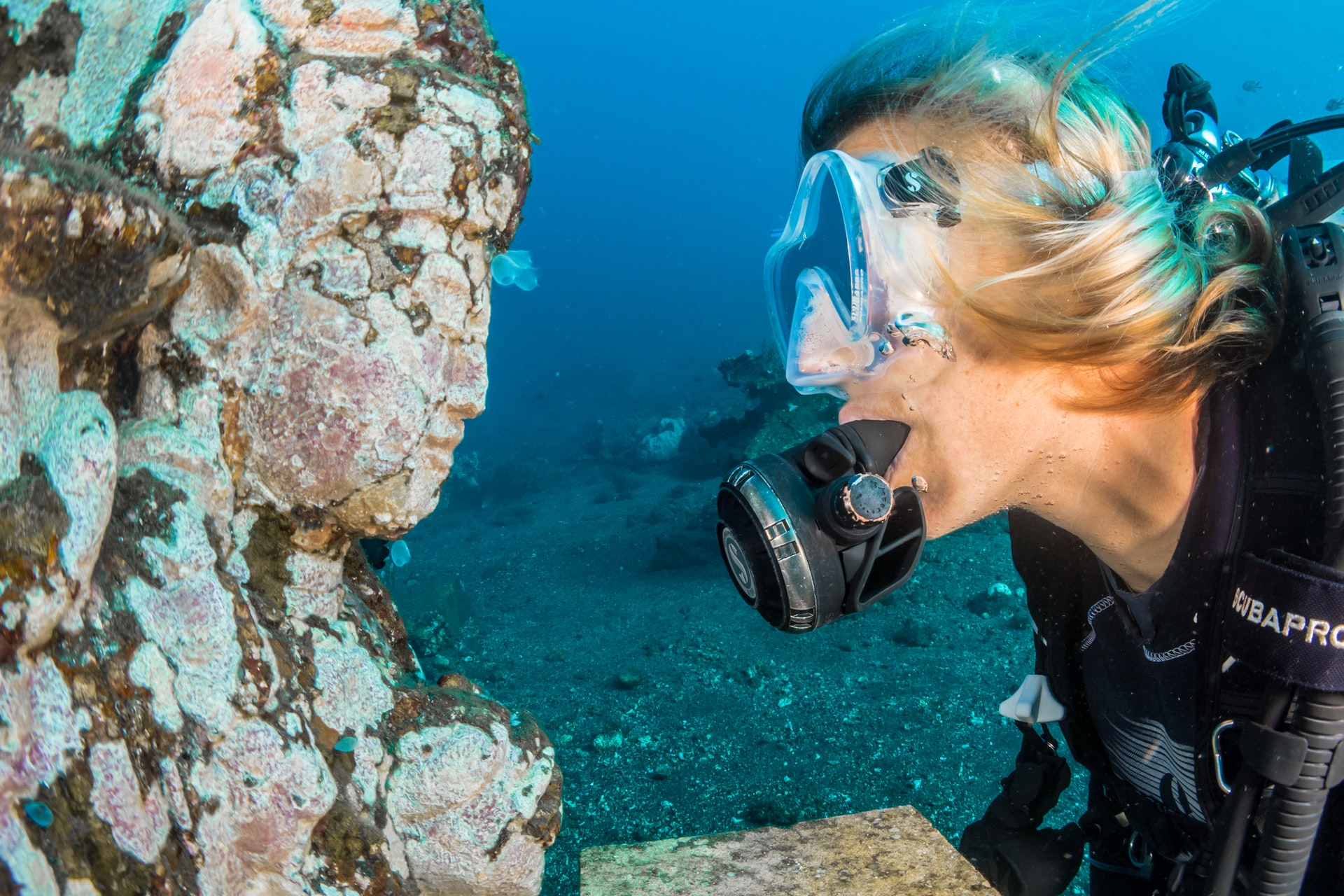Communicating with your buddy underwater is extremely important both for safety and fun.
You might want to share something exciting you’ve discovered, tell them there’s a problem, pass on how much air you have left, or just say you’re hungry and it’s time to end the dive for lunch.
If you’re above the surface, then the easiest way to communicate for most people is simply to talk.
But underwater, does this work? Or do we need to use other methods?
We’re going to see that while you can improvise a little bit and maybe loudly get your point across, that with standard equipment, scuba divers can’t talk well underwater.
We’re going to look at the more reliable communication methods, like hand signals, that we can use and how we can have a proper, full-on conversation underwater with technology.
- Can You Talk While Scuba Diving?
- How Does Sound Travel Underwater?
- What Does It Sound Like if You Talk Underwater?
- Can Other Divers Understand You When You Talk Underwater?
- Is There Equipment to Facilitate Communication When Scuba Diving?
- What Are the Most Common Communication Methods for Divers?
- 7 Communication Tips for Scuba Divers
- Conclusion
- You Might Also Like…
Disclosure: this post contains affiliate links (clearly marked with ), which means we may earn a commission if you buy something through them, at no additional cost to you.
Can You Talk While Scuba Diving?
To answer this, it’s easiest to consider how we talk above the surface.
Then it will become quickly apparent why talking underwater with standard scuba equipment is not easy to do.
We speak above the surface when air comes from our lungs via our vocal cords and out from our mouths.
Different sounds and words are made using carefully coordinated movements of our lips, tongues, jaw and the roof of our mouths combined.
Some sounds can even come through the nose.
When we scuba dive, we have a mask that makes it impossible to breathe through our nose, and straight away, this affects the ability to make certain sounds and speak clearly.
Additionally, held tightly in our mouths, the scuba regulator stops our jaw, lips, and tongue from moving normally and forming words.
So underwater, with standard scuba equipment, our ability to talk normally is significantly impaired.
Most of the body parts that we use to make sounds and words are restricted, making us very hard to understand.
How Does Sound Travel Underwater?
Sounds travel underwater as a mechanical wave, precisely the same as it does in air.
Because water is denser and more elastic than air, sound travels approximately four times faster underwater than it does at the surface.
Because the sound travels so much faster than our ears and brains are used to, it’s challenging to work out what direction sounds are coming from underwater.
Normally our brains can perceive a slight difference in time and intensity between one ear and the other and so can work out the direction of origin.
But with both ears being perceived as receiving the sound simultaneously and at the same volume, it’s normal underwater for all sounds to register as being from directly overhead.
What Does It Sound Like if You Talk Underwater?
Because you can’t move your lips, tongue, and jaw normally with the regulator in place and the mask nose pocket blocks your nose, it isn’t easy to talk intelligibly underwater.
Try to talk without moving your mouth, and you’ll experience just one aspect of what it’s like: like talking with a mouth full of cotton wool.
Additionally, although sound travels well underwater, it resists transmitting from one medium to another.
You form your words in air through your vocal cords, so you will find you need to talk very loudly to overcome the sound’s resistance to transmission across into the water.
You’re also competing to be loud enough to be heard over in-water noises from your regulator and bubbles.
Finally, the deeper you go, the denser your breathing gas gets, and this can affect the frequency of your voice, making it higher than usual.
Can Other Divers Understand You When You Talk Underwater?
If you stay reasonably close, talk loudly and slowly enough, it’s possible to be understood, especially by a diver that’s familiar with how you usually speak.
It is often possible to understand the divers mood from their speech pattern, inflection and volume, if not the actual message.
In general, though, it’s really quite challenging to be understood clearly except for short messages, and the effort of talking can use up a lot of your air.
So really, it’s usually better to rely on the more traditional communication methods and allow the reasonably silent world underwater to take over.
Is There Equipment to Facilitate Communication When Scuba Diving?
How to Transmit Sound Underwater
In recent years innovative companies have attempted to develop practical solutions to allow clear and easy voice communications underwater.
With hard-hat systems where their head is completely enclosed, often commercial divers communicate to the surface via wired systems:
This isn’t much of a problem as they are usually not moving around from their worksite, and because they typically have other pipes and connections in a “tether” to the surface that the communication wires can readily be added.
Of course, a recreational diver swimming around a coral reef with a cable to the surface or one connected to their buddy isn’t very practical.
And while commercial divers can have messages passed back and forth to other team members via the surface, it’s not very efficient.
For these applications, systems that transmit sound through water using ultrasound waves have been developed and allow for voice communications between divers working in practice similar to “walkie-talkie” radios.
There have been attempts to launch ultrasound communicators that work with standard scuba diving masks and regulators, although they have not been very successful.
These use push-to-talk or voice activation to transmit what is being said and bone-conducting speakers to play it to the recipient.
However, while these systems address the problem of transmission and playback of sound across distance, the speech remains as difficult to understand as the regulator is still in the diver’s mouth and their nose remains blocked.
To work well for recreational diving, these systems need a way for the diver to speak freely and so must be combined with a full-face mask.
Full-Face Masks with Communications
Coming originally from the commercial diving industry, the full-face mask is the best solution so far because it puts the diver’s mouth free inside an air-filled mask allowing the user to speak unencumbered.
They also let the diver comfortably nose breath, further assisting clear speech.
Face masks with a microphone and speaker system fitted allow divers to communicate with each other or to the surface.
Unfortunately, even modern recreational full-face masks are quite complicated to use, and divers need to use extra training to use them safely.
They are also a very costly investment, particularly with the communications equipment fitted, and so are effectively left for specific applications when standard kit won’t do.
What Are the Most Common Communication Methods for Divers?
Effective, traditional, and cost-effective or free ways to communicate underwater take a lot of beating, especially when the technological solutions to speak remain expensive and/or relatively underwhelming in their effectiveness.
Trying to talk with a regulator in your mouth and a mask on is difficult, and you’re hard to understand.
It can be a lot of wasted effort and air for not much result.
Remember also that one of the reasons why many people enjoy scuba so much is to get some peace and quiet from talking.
So perhaps try the silent methods before resorting to starting to shout.
Hand Signals
The most common way to communicate underwater is with hand signals.
These are designed to be as simple as possible so that a diver can ask a question, make a statement, or provide important information to their buddy.
There are different types of hand signals commonly used underwater.
Standardized Signals for Scuba Communication
Students are taught the vital communication hand signals that they will need to carry out a dive safely during their training.
These signals must be clearly understood by everyone underwater.
So the World Recreational Scuba Training Council has drawn up a list of the standard hand signals that all training agencies agree to teach their students.
By adhering to these standards, a diver can be understood no matter which agency they got their certification from.
As divers advance up the levels, more hand signals are added for the increasingly complicated aspects of diving that they encounter.
For example, technical divers have to learn a whole extra set of hand signals to communicate during the relatively complicated dives they will make.
Technical and cave divers also learn different signals for numbers to communicate vital information with just one hand for when the other is busy.
Commonly Used Signals for Wildlife
One of the main reasons people scuba dive is to see the remarkable wildlife in its natural habitat.
It’s great to share with your buddy what you’ve seen and to be able to do that underwater the community has developed hand signals for various sightings.
There are often local variations to these signals, but as Divemasters and divers travel worldwide, there’s become some general level of standardization.
These signals are also handy when you’ve spotted something and aren’t quite sure what you’re looking at.
A good Divemaster can give you the appropriate hand signal, so you’re up to speed on what particular fish just swam past.
Improvised With Your Buddy
It’s quite common for buddies who dive regularly together to develop their mix of signals for talking underwater.
This is fine and can be quite fun.
However, you have to remember that a new buddy might not understand the message you’re trying to convey.
Slates
Underwater slates allow vital information to be referred to during the dive and written messages to be passed between divers.
White plastic “slates” that can be cleaned and reused are common, and they can be written on underwater with a crayon or pencil.
These are often wrist-mounted for easy viewing or larger square or rectangular panels attached to the divers BCD.
Commonly used on technical divers, there are even wet notebooks when a diver needs to carry a lot of written information with them.
Noise Makers
Shakers, Rattles, and Tank Bangers are a great way to get divers’ attention when they’re looking the other way.
It’s even possible to communicate a basic message with the difference between a gentle shake and a vigorous rattle relatively easy to grasp.
Light Signals
Divers will use signals from their dive light at night or in low visibility to communicate with other divers clearly.
Variations on standard hand signals combined with the light or signals exclusively using the beam means divers can still get their message across.
7 Communication Tips for Scuba Divers
1. Practice Your Hand Signals
If you’ve not dived for a while, take the opportunity to review the standard hand signals before you plunge in.
For help, there are printed dive slates available and even mobile device apps to remind you.
Practice on land. It’s surprising just how much of a conversation you can have with scuba hand signals alone.
2. Take a Slate
If you want to be able to tell your buddy something complicated clearly, or there’s not a hand signal for it, or even if you’re prone to momentary lapses of memory, a slate is a perfect way to be able to communicate underwater.
3. Stay Close to Your Buddy
Good buddy behavior means that you should always be relatively close together.
After all, if you can’t see them, you’re unlikely to be able to communicate.
4. Take a Noise Maker
A gentle in-water sound can be heard over a long distance and is a great way to get your buddy’s attention.
Different noise makers make different sounds, and it’s very easy with experience to recognize your buddy’s rattle or tank-bang over other peoples.
5. Practice light signals for night diving or low visibility
The light signals for night dives or poor visibility can easily be forgotten if you’re not doing these types of dives very often.
Make sure you review them thoroughly before starting your dive.
6. Remember Limits of Talking
If you do have to resort to talking, speak slowly, as clear as you can, and loudly close to your buddy to have a chance to be understood.
7. Enjoy the Silence
Remember that with your buddy, scuba diving can be an incredibly relaxing experience.
Try not to make too much noise underwater. Your fellow divers will thank you for it.
Conclusion
We’ve seen that while it is possible to talk underwater, the clarity of speech is hugely restricted when using standard scuba kit, making it very hard to understand.
High-tech solutions to transmit clear speech do exist, but these are expensive and require special training.
It’s best to stick to the traditional methods such as hand signals or a slate for regular purposes and only leave trying to talk as a last resort.
You Might Also Like…
-

How Do Scuba Divers Drink Water? 5 Possible Ways (+7 Tips)
-

How Long Can Scuba Divers Stay Underwater? (+9 Limiting Factors)
-
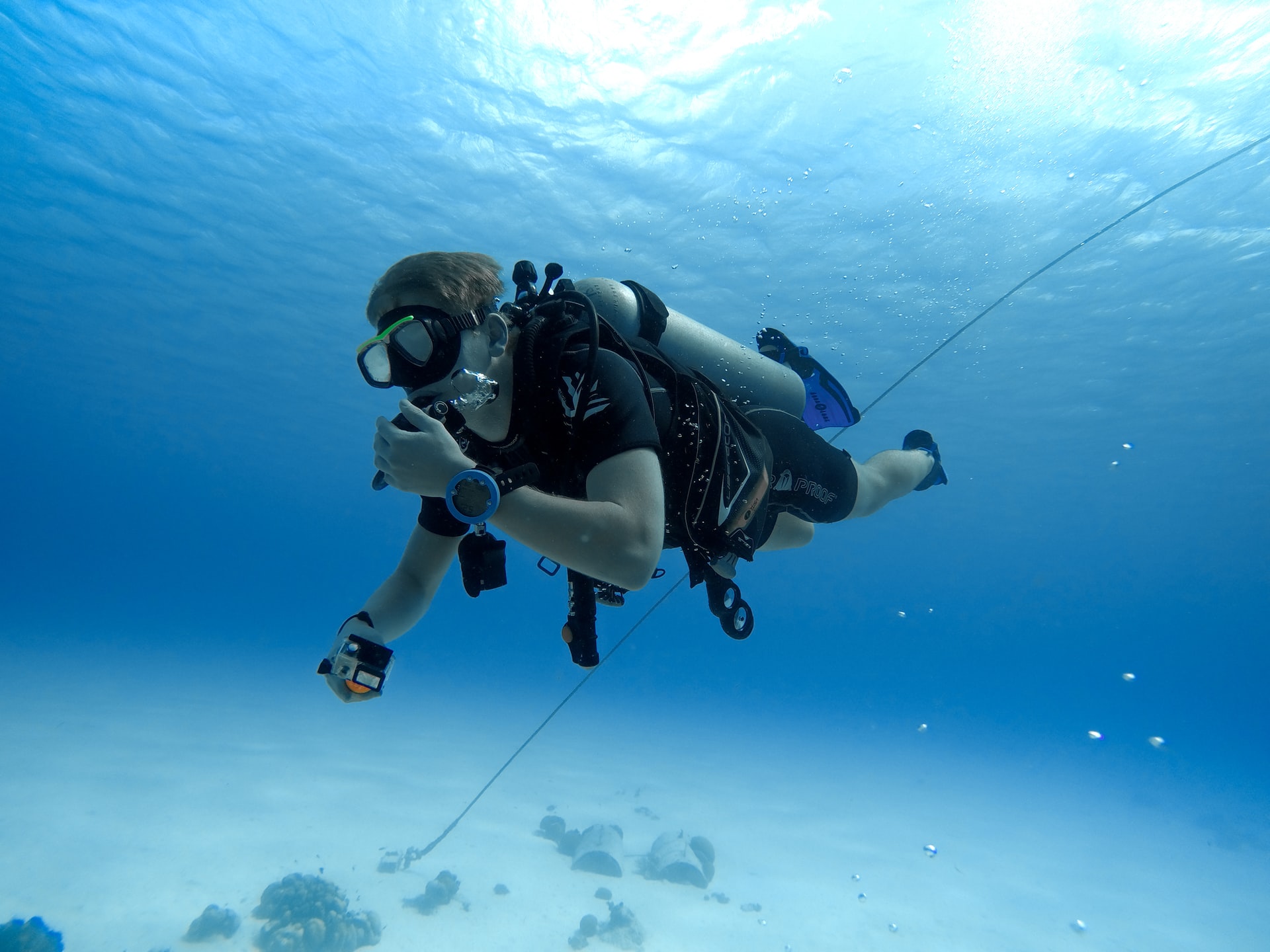
Are Scuba Divers Athletes? All the Facts (+New Competitive Forms)
-
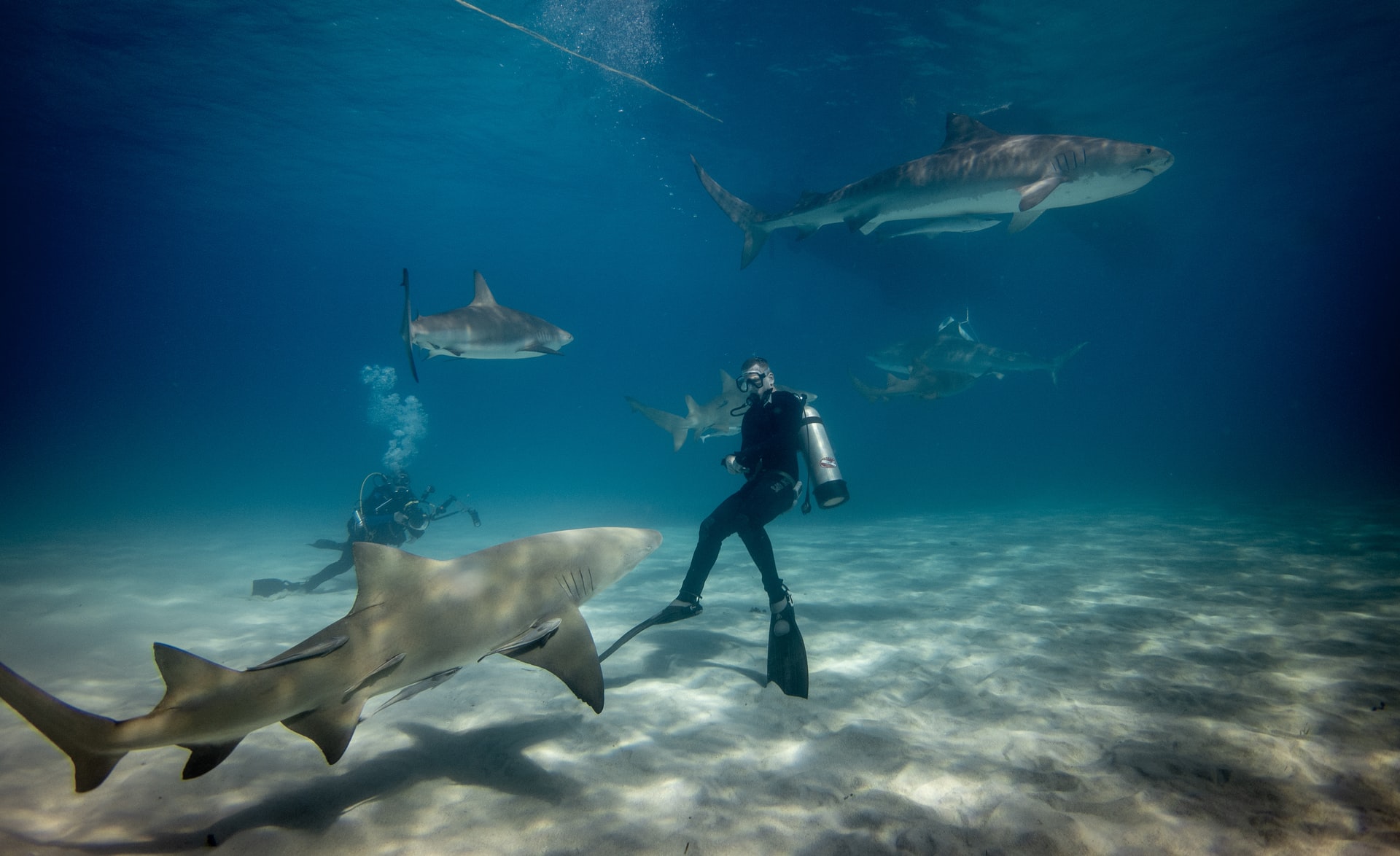
Are Sharks Scared of Scuba Divers? (What Every Diver Must Know)
-
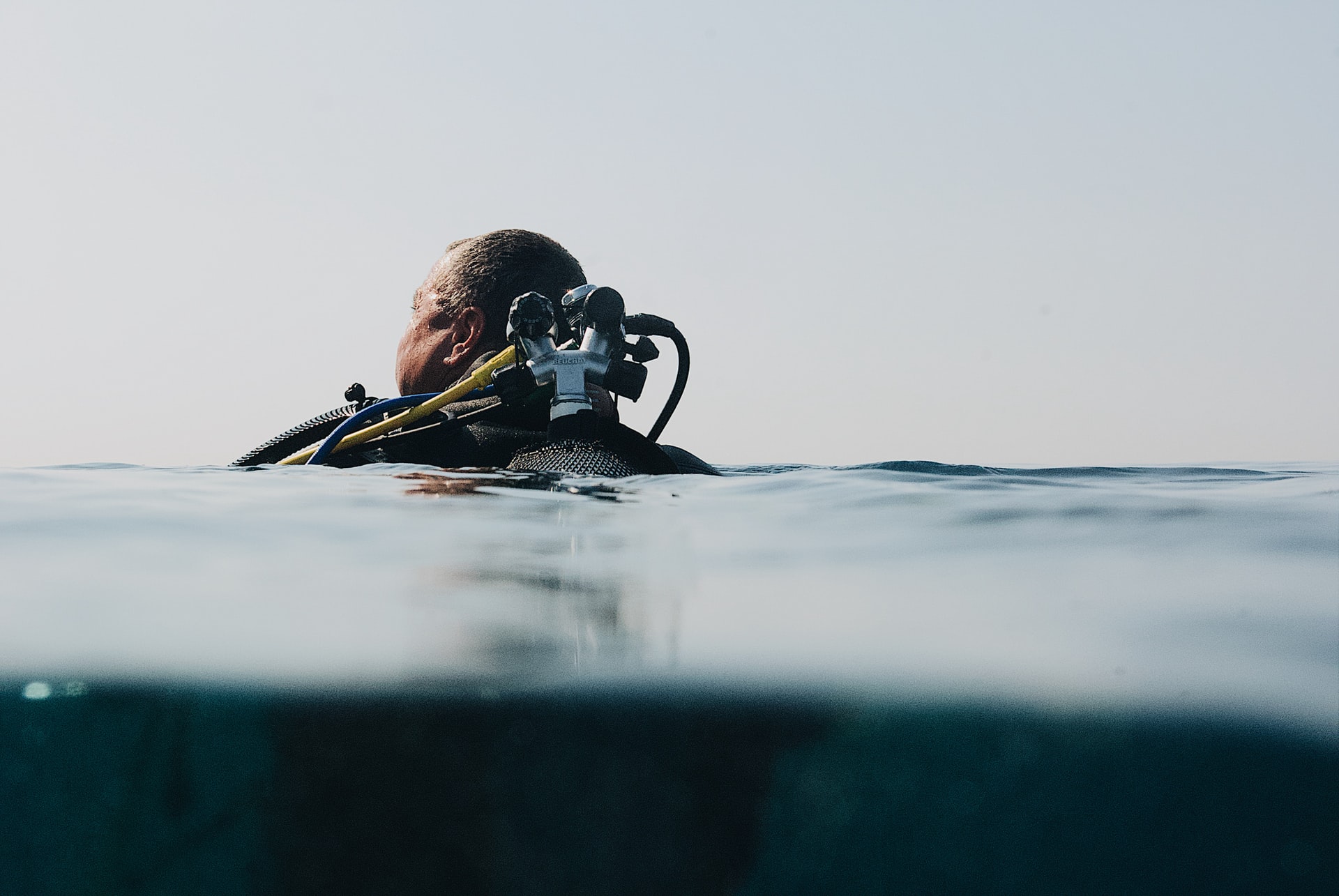
Who Should Not Scuba Dive? 17 Reasons (Every Diver Should Know)
-
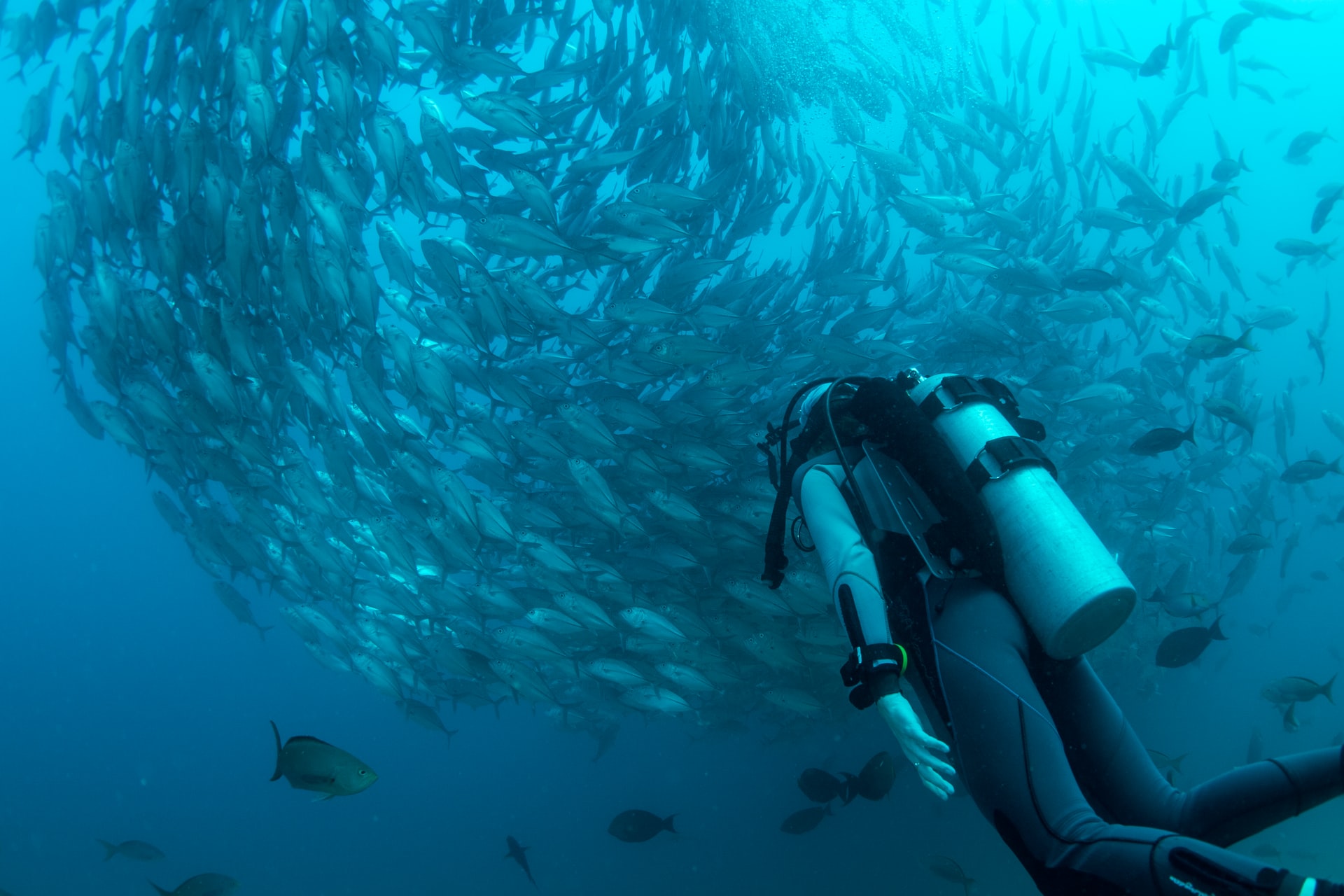
Should I Be Scared of Scuba Diving? 8 Common Fears (Debunked)
-
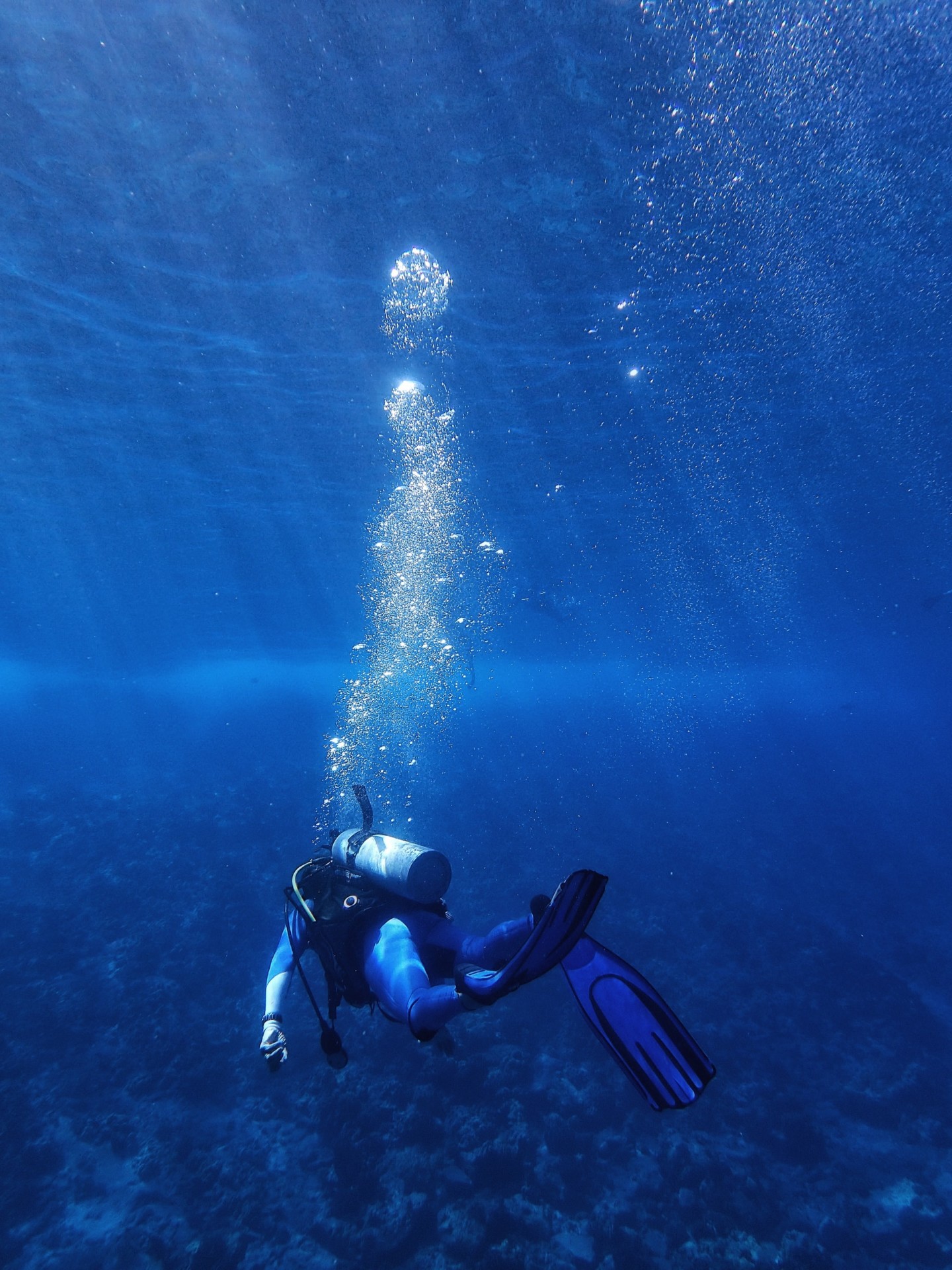
Why Do Scuba Divers Use More Air at Depth? (+4 Practical Tips)
-
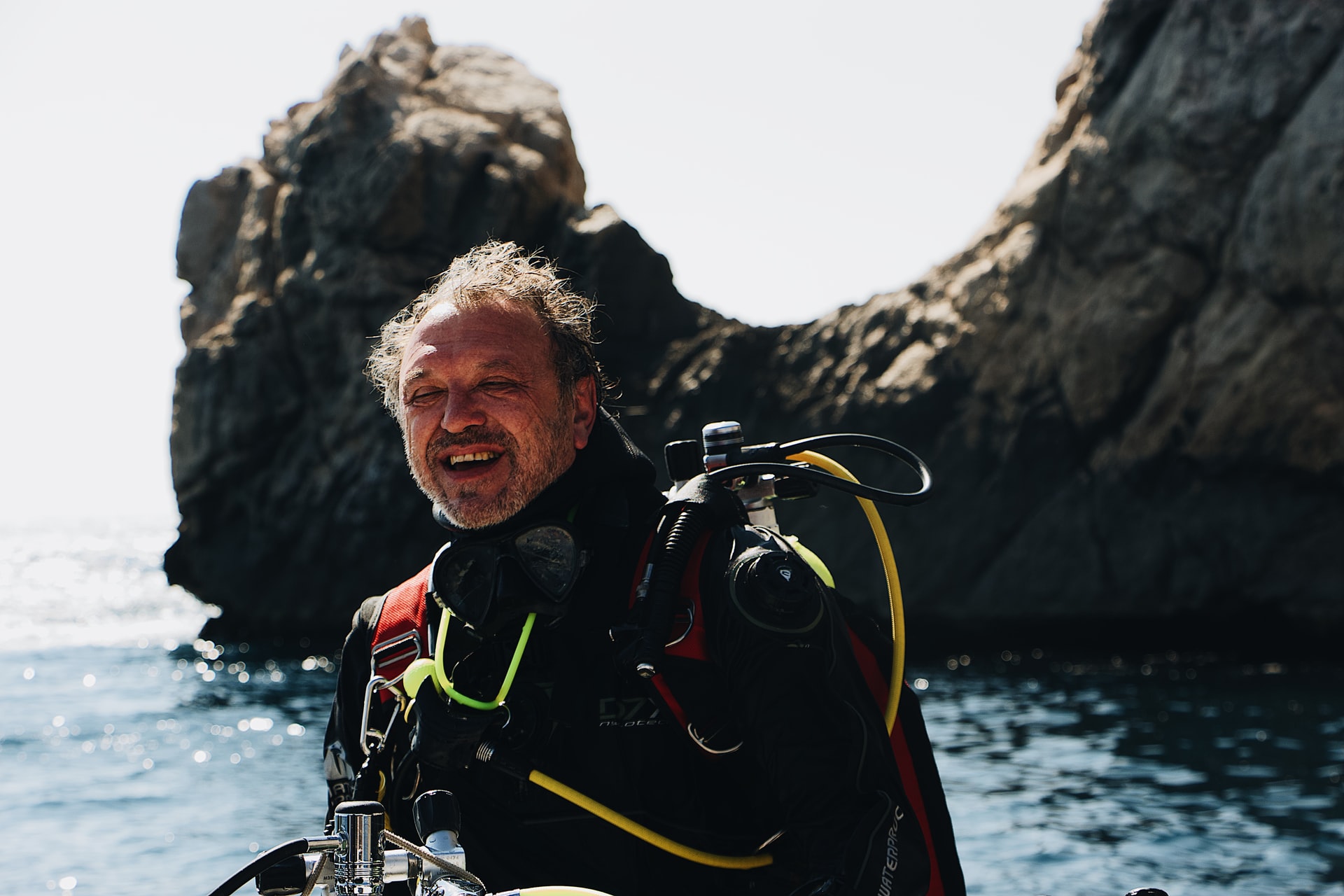
At What Age Should You Stop Scuba Diving? (+9 Tips for Older Divers)
-
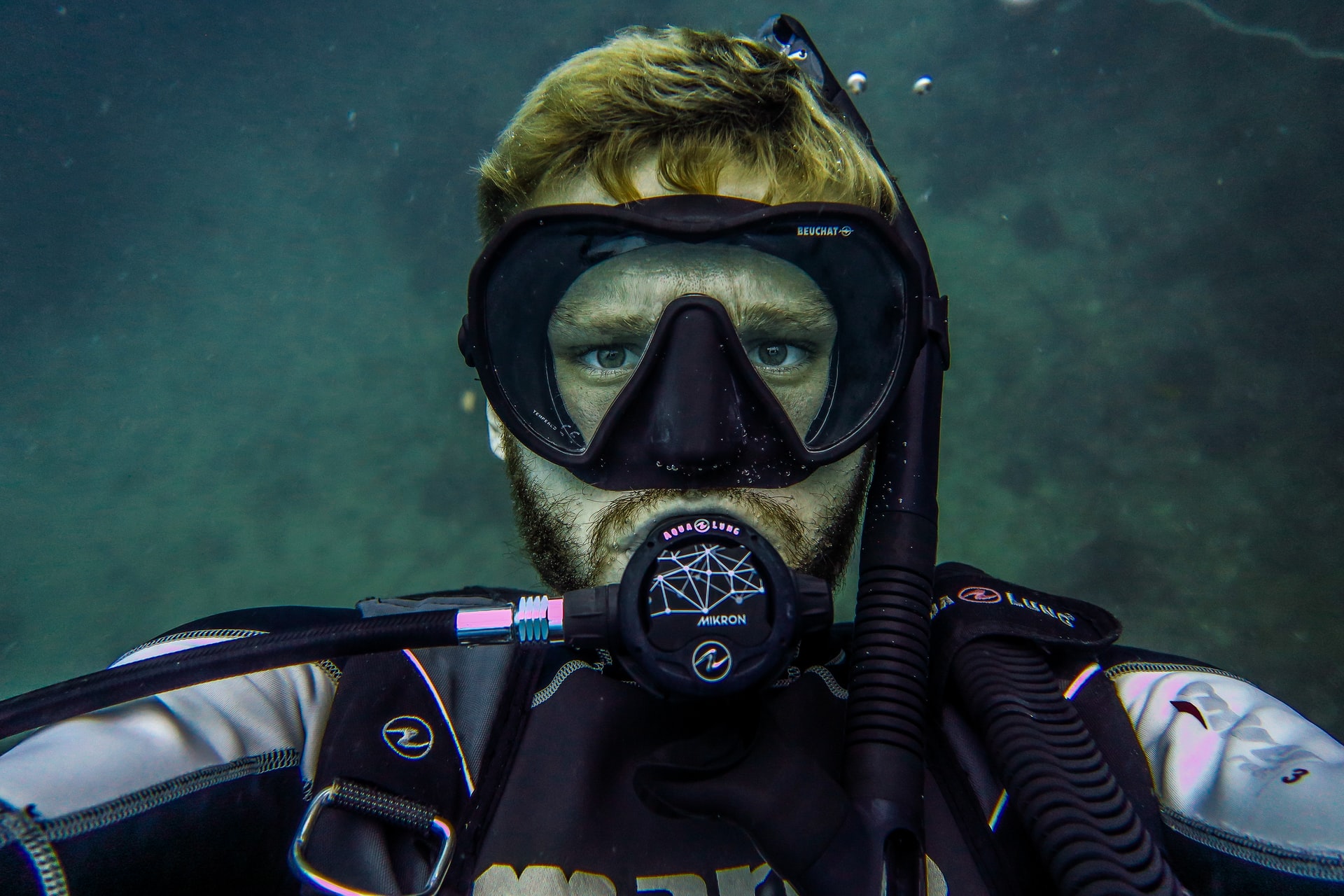
Should I Shave Before Scuba Diving? Crucial Facts (+9 Helpful Tips)
-
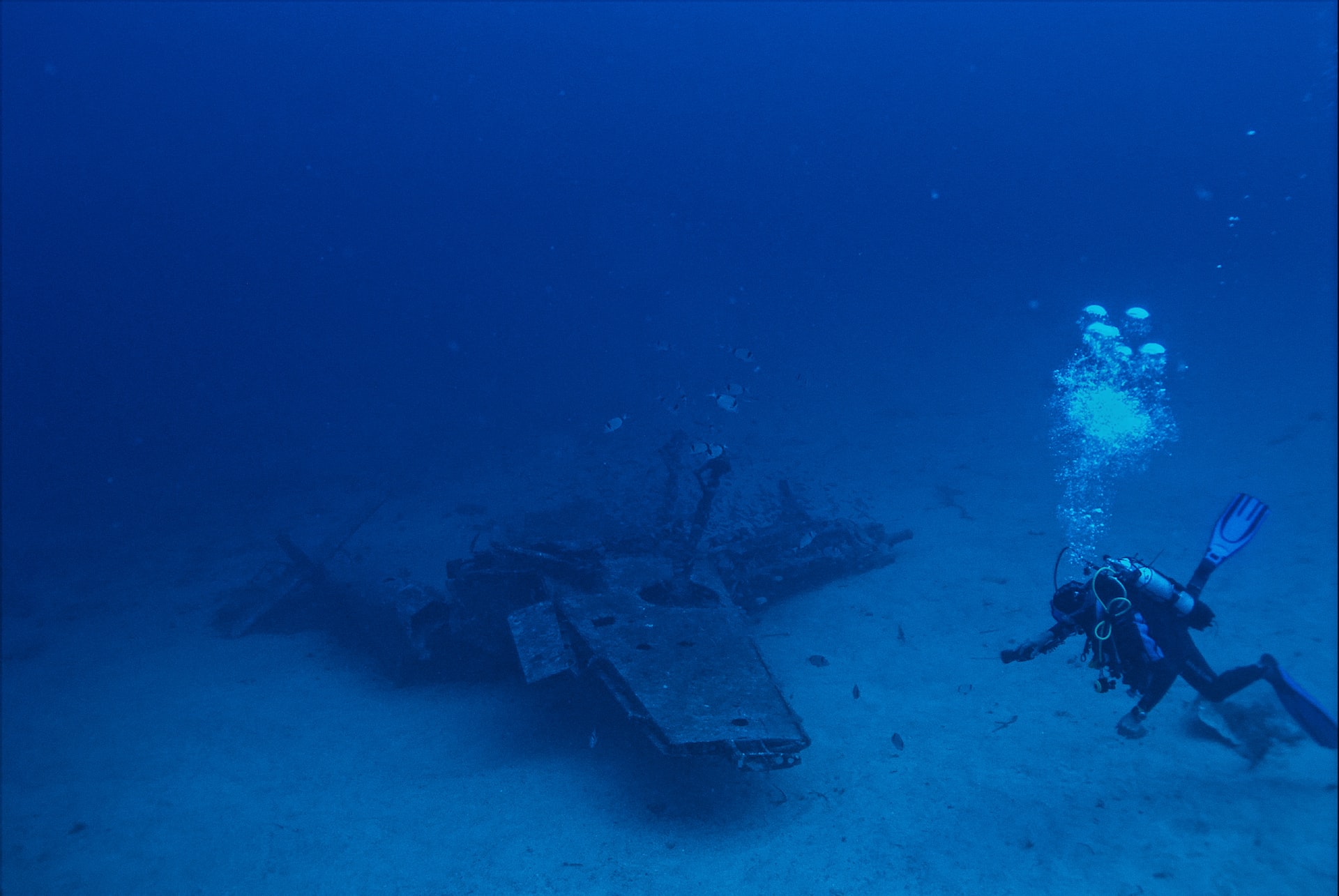
Why Do Scuba Divers Use Helium? (+Its Pros & Cons)
-
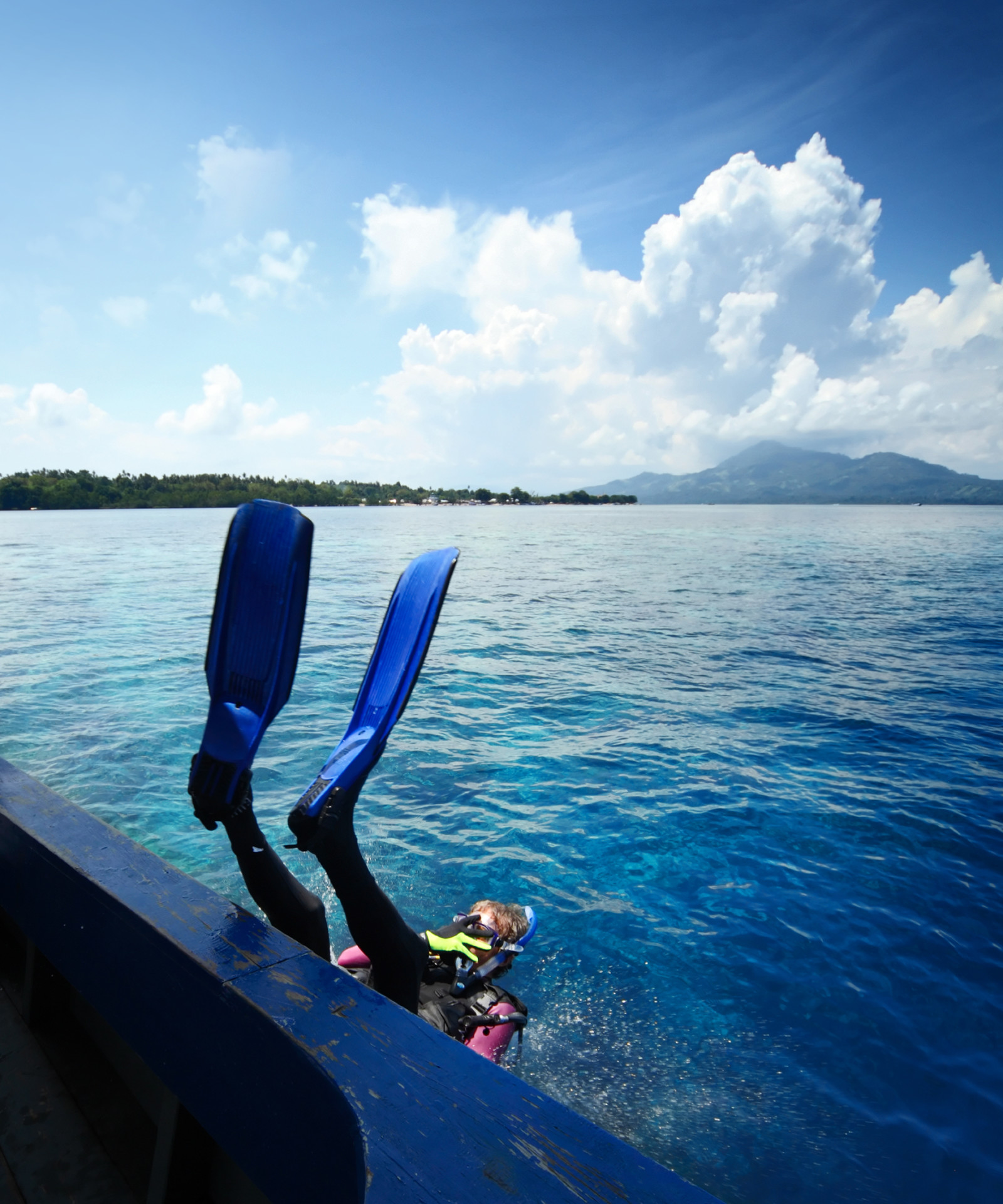
Why Do Scuba Divers Go in Backwards? (+3 Alternative Entries)
-
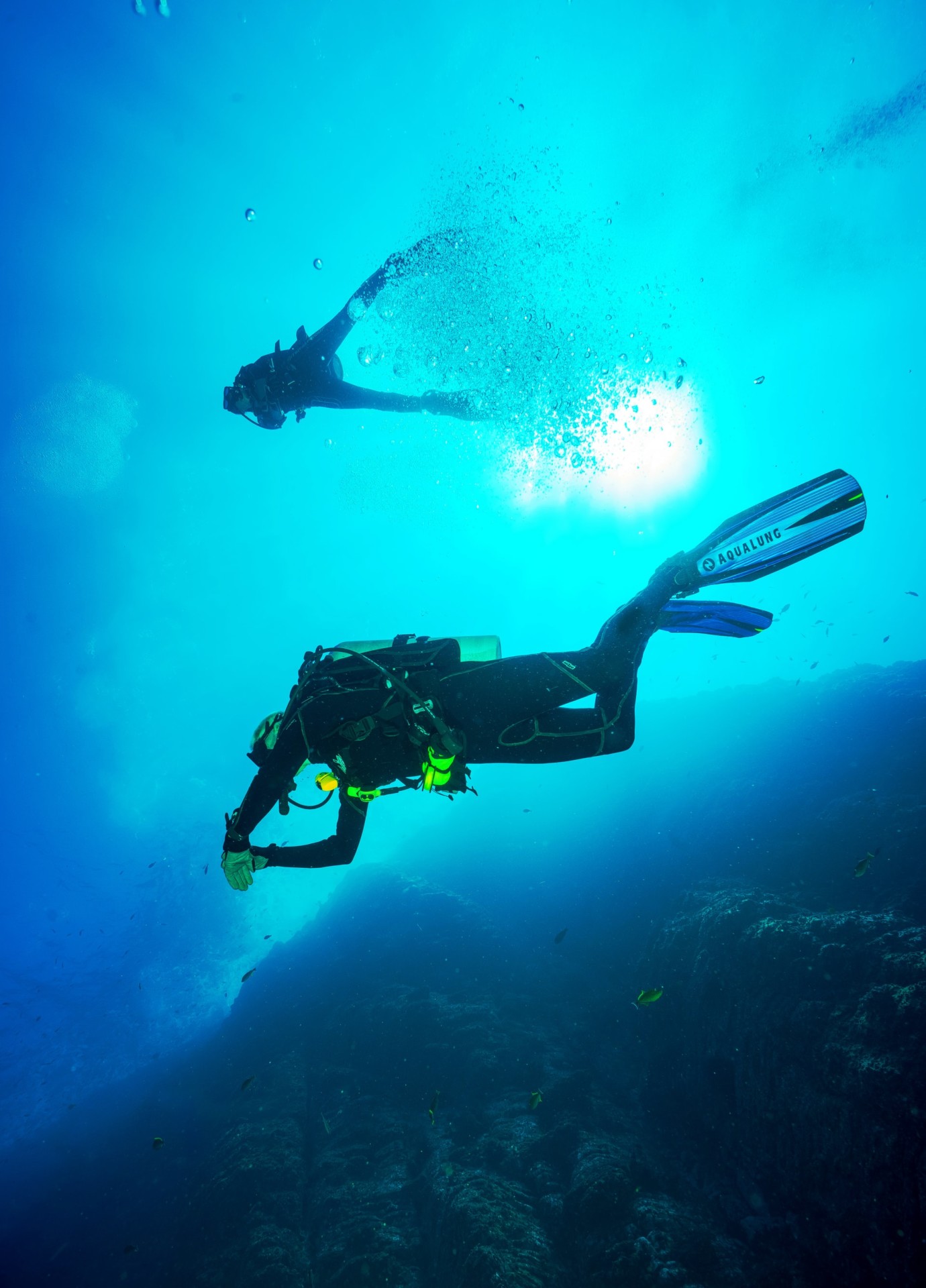
How Do Scuba Divers Sink and Float? (+Tips to Get It Right)

